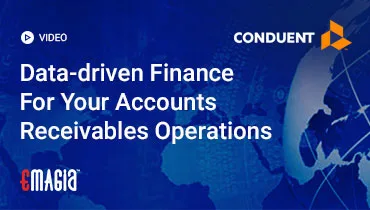In the world of business, documents like purchase orders and contracts are the foundation of every transaction. But what happens when the lines between them get blurry? You might be asking yourself, “Is a purchase order the same as a contract?” or perhaps, “When does a simple PO become a legally binding agreement?” This isn’t just a matter of semantics; it has real financial and legal implications for both buyers and sellers. This article will demystify the relationship between these two critical documents, providing a clear and comprehensive guide to help you protect your business and ensure smooth operations.
Understanding the Core of a Business Agreement
Before we can truly understand a purchase order’s role, we need to look at what makes any agreement legally enforceable. A purchase order is an essential tool in procurement, but it’s crucial to understand the foundational principles of contract law. A document doesn’t automatically become a contract just because it’s been sent or received. It requires a specific set of elements to be in place. Let’s delve into these core components that transform a simple request into a binding obligation.
The Anatomy of a Legally Binding Contract
A valid contract isn’t born from a single action. It’s a careful assembly of key elements, often referred to as the “four pillars” of a contract. Grasping these is the first step toward understanding the legal standing of any business document, including a purchase order. Without these components, an agreement lacks legal teeth and can’t be enforced in a court of law. It’s the difference between a friendly handshake and a sworn promise.
What is a Binding Agreement?
A binding agreement is a mutual understanding between two or more parties that creates legally enforceable obligations. It’s a formal pledge that, if broken, can result in legal consequences. This formality is what separates a casual conversation about a potential deal from a real business commitment. It sets clear expectations and provides recourse if one party fails to hold up their end of the bargain. Think of it as the rulebook for your business relationship.
The Four Pillars of Contract Law
Every enforceable contract, no matter how simple or complex, must contain four critical elements. Missing even one of these can render the entire agreement void. We’re talking about more than just a signature on a dotted line. These pillars are the backbone of commercial law and are essential for protecting all parties involved.
- Offer and Acceptance: The first party makes a clear, definite offer. The second party must then accept that offer without any changes. This isn’t a negotiation; it’s a “yes” or “no” to the terms as they are presented. Any counter-offer, even a slight change, invalidates the original offer and starts the process over.
- Consideration: This is the “value for value” exchange. It’s what each party gives up to enter into the agreement. It doesn’t have to be money; it can be goods, services, or even a promise to do something. For a contract to be valid, there must be a mutual exchange of value.
- Intent to Create Legal Relations: This element ensures that both parties genuinely intend for the agreement to be legally enforceable. This is usually assumed in commercial settings but can be a point of contention in informal or personal agreements.
- Capacity: All parties must have the legal ability to enter into a contract. This means they must be of legal age and sound mind. For a business, it means the person signing the document has the authority to represent the company.
The Role of a Purchase Order in a Transaction
A purchase order, or PO, is a fundamental document in the procurement process. It’s a powerful tool for formalizing a purchase, providing a clear record for both the buyer and the seller. However, its legal status is often misunderstood. Many people mistakenly believe that as soon as a buyer creates a PO, a contract is formed. This isn’t the case. A PO’s journey from a simple request to a binding contract is a key concept to grasp for any professional involved in purchasing or sales.
Defining the Purchase Order
At its core, a purchase order is a document created by a buyer and sent to a supplier. It’s a formal request for goods or services, detailing everything from the specific items and quantities to the agreed-upon prices and delivery dates. It’s an internal document first, used to approve and budget a purchase, and then becomes an official offer to the supplier.
The Journey from Offer to Agreement
This is where the magic happens. A purchase order is, by definition, an offer. The buyer is saying, “I would like to buy these items from you under these specific terms.” The supplier, upon receiving the PO, has a choice to make. They can accept the offer, reject it, or propose a change. This moment of decision is where the PO’s legal standing is determined.
When a Purchase Order Becomes an Agreement
A purchase order becomes a legally binding contract only when the seller accepts the terms laid out in the document. This acceptance can happen in a few different ways:
- Express Acceptance: The supplier signs the PO and sends it back to the buyer, or they send a formal “order confirmation” that explicitly references and accepts the PO’s terms. This is the most clear and legally sound method.
- Implied Acceptance: The supplier begins to fulfill the order without a formal signature. For example, they start shipping the goods or start providing the services as described in the PO. This action demonstrates their agreement to the terms.
Purchase Order vs. Contract: A Deep Dive into Key Differences
While a purchase order can become a contract, it’s not the same thing as a traditional, long-form contract. They serve different purposes and are used for different types of transactions. Knowing when to use one over the other is a hallmark of good business practice. Let’s compare them across several key criteria.
Scope and Duration
- Purchase Order: Typically used for a single, one-time transaction. It’s all about a specific list of goods or services, quantities, and prices for that particular order. It’s designed to be straightforward and for short-term use.
- Contract: A contract, especially a Master Services Agreement (MSA), is for a long-term business relationship. It sets the legal framework for all future transactions. It can include complex clauses about dispute resolution, intellectual property, confidentiality, and more.
Level of Detail
- Purchase Order: Contains the specifics of the purchase—item number, quantity, price, and delivery date. It’s a transactional document.
- Contract: Contains the terms of the relationship—service level agreements (SLAs), termination clauses, liability limitations, and payment schedules for a series of transactions. It’s a foundational document.
Flexibility and Risk
- Purchase Order: Because it’s for a single transaction, it’s less flexible and generally used for lower-risk purchases. Once accepted, the terms are set for that specific order.
- Contract: Offers more flexibility and protection for complex, high-risk, or recurring transactions. It provides a legal safety net for both parties over an extended period.
Legal Implications and the “Battle of the Forms”
The moment a PO becomes a contract, it introduces legal rights and obligations. But what happens when the buyer’s PO and the seller’s invoice or order confirmation have conflicting terms? This is a common legal issue known as the “battle of the forms.” It can lead to confusion and disputes, and understanding how it’s handled is crucial for risk management.
When Forms Clash: The Legal Framework
This situation often arises when a buyer sends a PO with their standard terms and conditions, and the seller responds with an invoice or an acknowledgment form that has different terms. Under traditional contract law, this would invalidate the agreement due to a lack of “mirror image” acceptance. However, modern commercial codes, like the Uniform Commercial Code (UCC), have adapted to this reality, providing clearer rules for these situations.
Navigating Discrepancies
The UCC essentially says that a contract can be formed even if the forms have minor differences, as long as a clear intent to transact exists. The tricky part is deciding which terms become part of the final agreement. Generally, the differing terms are treated as proposals for addition to the contract. These proposals are accepted unless they materially alter the original offer, the original offer explicitly limits acceptance to its terms, or the other party objects in a reasonable time. This legal gray area highlights why clear communication and formalized agreements are always the best practice.
Best Practices for Managing Purchase Orders
Understanding the legal nuances of purchase orders is one thing; applying that knowledge to create a streamlined, effective process is another. A well-managed PO system not only provides legal protection but also improves financial transparency and efficiency. Here are some of the best practices to implement.
Creating a Robust PO Process
- Establish Clear Policies: Define when a PO is required and who is authorized to create and approve them. This prevents unauthorized spending and ensures a paper trail for every transaction.
- Use Detailed Templates: A well-designed PO template should include all the necessary information to make the offer clear and complete. This includes unique PO numbers, detailed line items, pricing, payment terms, and delivery instructions.
- Ensure Vendor Acceptance: Always require a formal acceptance from your vendor. Whether it’s a signed copy or an email confirmation, a clear, documented acceptance is your best legal defense.
The Role of Automation in Procurement
Modern procurement has moved beyond manual, paper-based processes. Technology and automation play a crucial role in creating a more efficient and legally sound system. Software can automate the creation and approval of POs, track vendor confirmations, and even match invoices to the original PO, reducing errors and ensuring a smooth, auditable workflow. This digital transformation strengthens the legal standing of your documents and gives you greater control over your spending.
Pioneering the Future of Procurement with Emagia
Managing the legal and financial complexities of purchase orders and contracts is a monumental task for any business. From ensuring a PO has been formally accepted to mitigating the risk of a “battle of the forms,” every step is critical. The traditional, manual processes are not only inefficient but also leave businesses vulnerable to errors and disputes. This is where modern financial technology comes in, and Emagia is at the forefront of this evolution.
Emagia offers a powerful suite of automation tools designed to transform your order-to-cash process. By leveraging artificial intelligence and machine learning, Emagia’s platform streamlines everything from order management to invoice matching. It can automatically track the status of purchase orders, ensuring you have clear, documented proof of acceptance. The platform helps you maintain a single source of truth for all your transactional data, creating a robust audit trail that provides legal and financial clarity. With Emagia, you’re not just digitizing a process; you’re building a more intelligent, resilient, and legally sound financial operation that safeguards your business from the common pitfalls of procurement.
Frequently Asked Questions About POs and Contracts
Is a purchase order a legally binding document?
A purchase order is a legally binding document only once it has been formally accepted by the supplier or seller. Before acceptance, it is considered a non-binding offer from the buyer.
Does a purchase order need a signature to be valid?
While a signature is a clear form of acceptance, it is not always required. A purchase order can become a valid contract through the supplier’s actions, such as shipping the goods or providing the services listed in the PO. However, a written or electronic signature provides the strongest evidence of a mutual agreement.
What is the difference between a purchase order and an invoice?
A purchase order is a document created by the buyer to order goods or services. An invoice, on the other hand, is a bill sent by the seller to the buyer after the goods have been delivered or the services have been rendered. The invoice requests payment for the items listed on the purchase order.
What is a blanket purchase order?
A blanket purchase order is a single PO that covers multiple purchases over a specified period. It’s often used for recurring buys with the same vendor. The PO sets the terms and a maximum value, and individual “releases” or “call-offs” are made against it when goods are needed, without creating a new contract each time.



